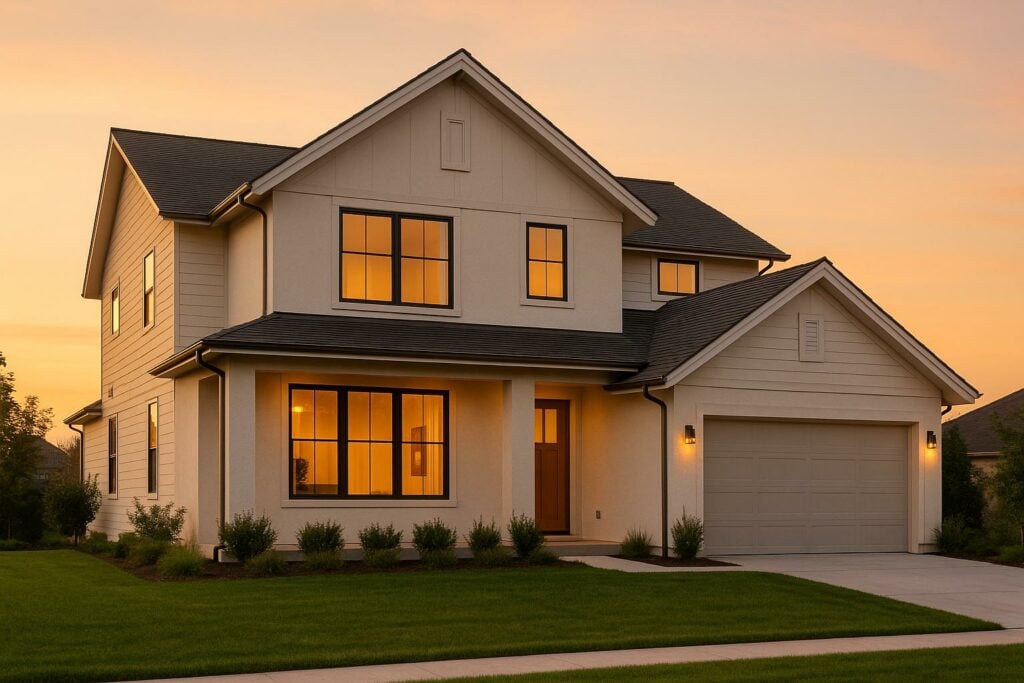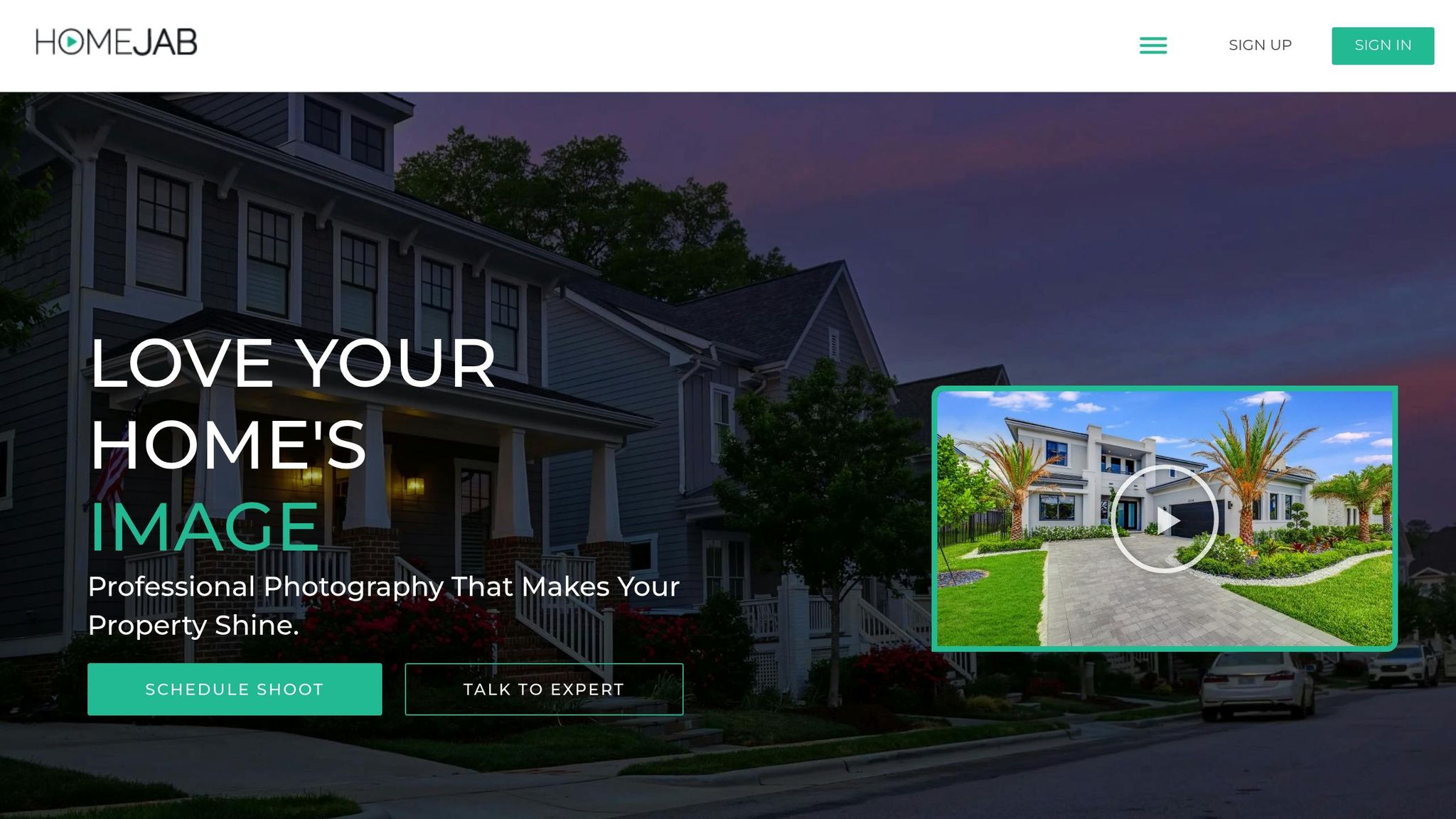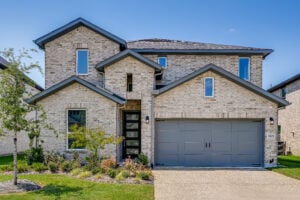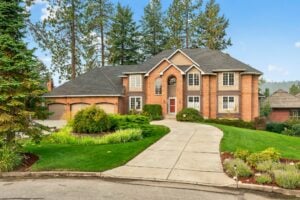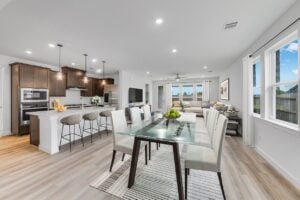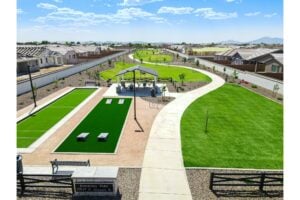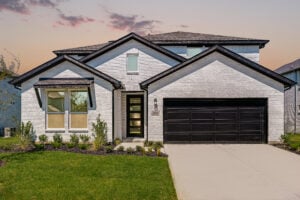When it comes to real estate photography, golden hour and twilight are two standout times of day that can transform property listings. Golden hour, occurring just after sunrise or before sunset, offers warm, soft lighting that makes homes feel welcoming and cozy. Twilight, right after sunset, creates a dramatic and luxurious atmosphere with deep blue skies and glowing interior lights. Both lighting styles can boost listing views – golden hour photos see a 61% increase, while twilight images drive up views by 76%.
Here’s a quick breakdown of their differences:
- Golden Hour: Warm tones, longer shooting window, ideal for outdoor spaces like gardens and pools.
- Twilight: Cool tones, narrow shooting window, perfect for high-end homes and properties with outdoor lighting.
Choosing between the two depends on your property type, target audience, and budget. Golden hour works well for creating a cozy feel, while twilight adds elegance and sophistication, especially for luxury homes. Professional photographers can help ensure precise timing and high-quality results.
Golden Hour Photography for Real Estate
What is Golden Hour?
Golden hour refers to the brief period right after sunrise or just before sunset when sunlight is low in the sky and casts a warm, golden glow. The exact timing depends on the season and location. In summer, this magical lighting can last longer, while winter offers a shorter window, requiring photographers to act quickly and plan ahead to capture properties at their peak.
How Golden Hour Photography Looks
Golden hour has the power to turn ordinary real estate photos into something eye-catching. The soft, golden light bathes properties in warm amber tones, making exteriors and surrounding landscapes appear radiant. It accentuates architectural details, creates long, dramatic shadows, and makes outdoor features like gardens and pools look especially inviting.
Unlike the harsh contrasts of midday light, golden hour provides an even, flattering glow. This natural lighting gives properties a cinematic and welcoming quality, which can make a listing more appealing to potential buyers.
Benefits of Golden Hour Photography
The unique lighting of golden hour offers more than just visual appeal – it delivers real marketing advantages. Real estate listings featuring golden hour photos see 61% more views compared to those taken at other times. This increased attention can result in more buyer interest.
Golden hour lighting enhances curb appeal by making properties look more inviting and aesthetically pleasing. The warm tones evoke a sense of comfort, which resonates particularly well with buyers seeking a cozy, welcoming home. For high-end properties, this lighting adds a touch of elegance and sophistication.
Outdoor features also shine during golden hour. Pools glisten, landscaping looks lush, and architectural textures take on a richness that helps properties stand out in a competitive market.
Challenges and Planning Requirements
While golden hour photography produces stunning results, it requires careful planning to make the most of its short window. Timing is critical, as the light changes quickly. Landscape photographer Steve Schwindt emphasizes the importance of preparation:
"It heightens the need to plan ahead. You need to have an idea of what you want to shoot beforehand."
Photographer Tina Tryforos also notes how rapidly conditions can shift, often within minutes.
The orientation of the property is another key factor. East-facing homes look best during the morning golden hour, while west-facing properties shine in the evening. Scouting the location in advance, using apps to track sunrise and sunset times, and understanding the sun’s path relative to the property are all essential steps.
Weather can further complicate things. While some cloud cover can enhance the golden hour effect, too much can diminish it entirely. This unpredictability means photographers need backup plans and flexibility in their schedules. Winter’s shorter golden hour leaves less room for error, while summer’s extended timeframe offers more chances to get the perfect shot, albeit with seasonal changes in foliage to consider.
Despite the challenges, the effort pays off. Golden hour photography can dramatically enhance a listing’s appeal, making it a worthwhile investment for properties where warm, inviting imagery can make all the difference.
Twilight Photography for Real Estate
What is Twilight?
Twilight refers to the short period after the sun has set but before the sky turns completely dark. During this time, the sky takes on rich blue and purple hues while still offering enough natural light to capture stunning property photos. This window usually lasts around 20 minutes. Unlike the golden hour, which bathes everything in warm amber tones, twilight provides a cooler, more polished color palette. The deepening sky acts as a dramatic backdrop, allowing the property’s artificial lighting to shine and highlight its best features.
How Twilight Photography Looks
Twilight photography elevates standard property photos into something far more elegant and eye-catching. The contrast between a softly lit home and the dusky sky creates a cinematic effect that draws viewers in. Warm interior lights glowing through windows add a sense of coziness, while exterior lighting highlights key architectural elements and landscaping. The cooler tones of the twilight sky add a layer of sophistication, making the property feel luxurious and well-cared for. Outdoor spaces like pools with underwater lighting or beautifully landscaped yards are showcased in a way that evokes feelings of comfort and relaxation. This visual appeal can make all the difference in grabbing attention and leaving a lasting impression.
Benefits of Twilight Photography
Beyond its striking visuals, twilight photography delivers real marketing advantages. Listings that feature a twilight image as the main photo see an average increase in views of 76%. This surge in visibility often translates to heightened buyer interest and quicker sales. Twilight photos are especially popular for higher-end homes, particularly those priced above $300,000. This association with luxury helps position properties as premium listings. Additionally, twilight photography is perfect for showcasing outdoor spaces such as patios, decks, and pools, giving them a resort-like charm that appeals to buyers. With nearly 90% of homebuyers citing high-quality photos as a key feature in real estate listings, twilight photography offers a competitive edge.
Challenges and Planning Requirements
Capturing twilight photos requires careful timing and detailed preparation due to the narrow window of opportunity. The light changes rapidly, so photographers must plan each shot meticulously and work efficiently. One of the biggest challenges is balancing the warm yellow tones of interior lighting with the cooler blue hues of the twilight sky. This often involves in-camera adjustments or post-processing to resolve color temperature differences. Photographers may also use flash to brighten darker areas and blend the various light sources seamlessly.
The low light conditions of twilight demand longer exposure times, making a sturdy tripod essential to avoid blurry images. Shooting in RAW format and using bracketing techniques helps produce high-quality HDR images with greater detail. Weather conditions can also impact the shoot – clouds might enhance the twilight effect or completely obscure it. As a result, having backup dates is a smart precaution.
For situations where traditional twilight photography isn’t feasible, virtual twilight offers a convenient alternative. This digital technique transforms daytime photos into twilight-like images by adjusting colors, adding lighting effects, and replacing the sky with a dusk setting. While it lacks the authenticity of an actual twilight shot, virtual twilight provides flexibility and ensures consistency, making it a practical option for many listings.
Golden Hour vs. Twilight: Direct Comparison
Comparison Table
Knowing the differences between golden hour and twilight photography can help you decide which is better for your property listing. Here’s a side-by-side look at the two:
| Feature | Golden Hour | Twilight (Blue Hour) |
|---|---|---|
| Lighting Quality | Warm, soft, golden hue | Cool, deep blue hue |
| Color Temperature | Warm tones | Cold tones |
| Shooting Window | About 30 minutes (more flexible) | Around 15–20 minutes (very narrow) |
| Ambiance Created | Welcoming, inviting | Elegant, dramatic, luxurious |
| Best Property Types | Outdoor spaces, gardens, pools | High-end properties with outdoor lighting features |
| Equipment Needs | Tripod recommended | Tripod essential; may need external flash or LED panels |
| Post-Processing | Minimal editing needed | Extensive editing for balanced lighting |
| Scheduling Flexibility | Easier to plan | Requires precise timing |
Main Differences and When to Use Each
The table gives a quick overview, but let’s dive deeper into when each lighting condition works best.
Golden hour is ideal for showcasing natural beauty. Think outdoor spaces like gardens, pools, or patios bathed in a warm, inviting glow. It’s perfect for creating a cozy, welcoming atmosphere that resonates with potential buyers. On the other hand, twilight photography is all about drama and elegance. It’s particularly effective for luxury properties, where the contrast between a deep blue sky and warm interior lights can make the home look like a scene from a movie. This style also highlights architectural details and outdoor lighting, giving listings a polished and upscale feel.
Golden hour offers a longer shooting window, giving photographers more time to capture multiple angles. Twilight, however, has a much narrower timeframe, meaning precision and preparation are key.
There’s also a practical side to consider. Golden hour photography is generally less expensive and requires fewer technical tools, making it a more budget-friendly option. Twilight photography, by contrast, tends to cost more due to the specialized equipment and editing involved. For instance, Sharp Frame Media charges $99 for 4–5 traditional twilight photos, while virtual twilight edits cost $25 per photo.
Interestingly, only about 8% of online home listings include twilight shots, which can make these photos a standout feature. Plus, 78% of luxury real estate agents believe twilight photography significantly increases listing engagement. Whether you’re aiming for affordability or a bold, high-end look, choosing the right lighting can elevate your property’s appeal and help you make the most of your marketing budget.
sbb-itb-82c5f45
How to Choose the Right Lighting for Your Property
What to Consider
Selecting the right lighting can make a big difference in showcasing your property. It’s all about emphasizing the features that make your home stand out. Here’s what to keep in mind when deciding between golden hour and twilight photography.
The style and architecture of your property play a huge role in determining the ideal lighting. Golden hour, with its soft, natural glow, is perfect for highlighting outdoor spaces like gardens or patios. On the other hand, twilight photography brings out the drama in architectural details and showcases outdoor lighting systems. Think about the mood you want to create for potential buyers: golden hour conveys warmth and comfort, while twilight adds a touch of sophistication and elegance.
Budget is another important factor. Twilight photography is more commonly used for higher-priced homes – 59% of homes priced at $500,000 or more feature twilight shots, compared to 32% for homes in the $300,000–$500,000 range and just 8% for properties under $300,000. Weather conditions and local market trends also matter. Since most listings rely on daytime photos, incorporating twilight shots can make your property stand out. In fact, 78% of luxury real estate agents believe twilight images significantly boost engagement with listings.
To make the most of twilight photography, scout the best angles on your property and ensure all exterior and interior lights are working. This attention to detail can dramatically enhance the impact of your photos. Blending daytime and twilight images can also offer a well-rounded perspective of your property. Partnering with a reliable photographer can simplify the process and ensure top-notch results.
How HomeJab Can Help
Choosing a trusted photography service is essential to getting the lighting just right. HomeJab specializes in real estate photography and connects you with experienced local photographers who excel in both golden hour and twilight photography. They provide expert guidance tailored to your property’s unique needs.
HomeJab offers a range of services, including twilight and virtual dusk photos, HDR photography, video tours, and aerial photography. This allows you to mix and match lighting styles to showcase your property from every angle. Their photographers are equipped with the tools and expertise to handle both golden hour and twilight conditions seamlessly.
With quick turnaround times and flexible packages, HomeJab makes it easy to meet the scheduling demands of twilight photography. Whether you’re highlighting a cozy home with golden hour’s inviting glow or a high-end property that shines under twilight’s dramatic lighting, HomeJab’s nationwide service and bulk pricing options ensure you get consistent, high-quality results that fit your budget.
Conclusion
Key Points
Golden hour bathes outdoor spaces in a soft, warm light, enhancing natural features, while twilight adds a sense of elegance by emphasizing architectural details. Listings with golden hour photos see a 61% increase in views, and those featuring twilight images enjoy a 76% boost in visibility.
Golden hour works wonders for homes with welcoming outdoor areas, while twilight photography shines for luxury properties. In fact, 59% of homes priced over $500,000 benefit from twilight photos, compared to just 8% of lower-priced homes. Among real estate agents, 78% believe that twilight images drive higher engagement for luxury listings.
Capturing these lighting effects requires precise timing and technical skill, which is why professional photographers – like those at HomeJab – are essential. Their expertise ensures your property is showcased at its absolute best, maximizing its appeal.
In a market where nearly 90% of homebuyers prioritize high-quality photos, investing in professional photography with the right lighting isn’t just important – it’s what sets your listing apart and helps it sell.
Breaking Down My Real Estate Photography Twilight Workflow – BTS + Top Tips!
FAQs
Should I use golden hour or twilight photography for my real estate listing?
Choosing between golden hour and twilight photography comes down to the mood you want to create and the features you want to emphasize in your property listing.
Golden hour, that magical time just after sunrise or before sunset, bathes everything in a soft, warm glow. It’s perfect for highlighting outdoor spaces, lush greenery, and architectural details with a light, inviting feel. This lighting works especially well for properties with open, airy designs or stunning landscaping.
On the other hand, twilight photography, taken right after sunset or just before sunrise, offers a more dramatic and refined vibe. It’s great for showcasing exterior lighting – think glowing pool lights, illuminated pathways, or warmly lit windows. This approach is often a great fit for luxury properties or homes with standout outdoor features.
When deciding, think about the property’s personality and the emotional response you want to evoke in potential buyers. The right lighting can make all the difference in setting the tone.
What challenges and preparations are involved in taking high-quality twilight photos for real estate?
Capturing breathtaking twilight photos can be tricky. The low light makes it hard to get the perfect shot, and there’s always the challenge of avoiding camera shake while balancing the brightness of interior and exterior lighting. Plus, using high ISO settings to compensate for the darkness can introduce noise, which can hurt the overall image quality if not handled carefully.
Preparation is key. Arrive early to give yourself enough time to set up. Turn on all the interior and exterior lights to create a warm, inviting atmosphere. For the best results, use camera settings like a narrow aperture (around f/8), a low ISO (such as 100), and longer exposure times – sometimes up to 4 seconds. A sturdy tripod is a must-have to keep your shots sharp and professional, minimizing any risk of blur.
Is virtual twilight photography a good alternative to traditional twilight photos for real estate listings?
Virtual twilight photography serves as an excellent alternative to traditional twilight shots for real estate listings. It stands out for its affordability, flexibility, and reliable quality, especially when unpredictable weather or tight timelines make traditional twilight shoots difficult to arrange.
Although virtual twilight images might not capture the same natural atmosphere as real twilight photos, they still offer an eye-catching and cost-effective solution for showcasing properties. This approach is particularly handy for quickly enhancing listings without the hassle of coordinating an on-site twilight session.

